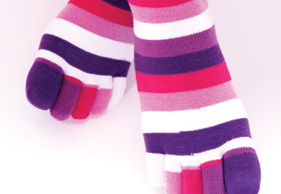At 63, I am coaching adult marathon runners based on my 40 years of running experience. My best performance is a silver medal at the Harrismith Mountain Race. My runners have all shown stunning improvement and good times. The word has spread, and I have many good runners wanting me to make them run faster times, but I have no accreditation. I am keen to acquire something behind my name, and thus need to know if you can refer me to an institution where I can subscribe locally or by distance learning. – LEON LOUW
ANSWER
Unfortunately, Athletics South Africa’s (ASA) coaching structures have effectively collapsed. This was the situation we inherited when the new Board was elected last year. We have been working on a new dispensation and should hopefully have a new structure in place later this year. It is important that the plan is properly thought out, hence the delay. We will keep you updated as to when we are able to provide more detail. We are confident to have some great coaching structures in place soon.
Modern Athlete Expert
JAMES EVANS
Chairperson of the ASA Board
Broken Foot
I broke my foot recently and am starting to build up slowly in training. Can you help with any exercise tips for this injury? – @sampickard3 (Via Twitter)
ANSWER
Don’t start running straight away! Even a slight imbalance or limp can cause a variety of other injuries. A lot of what you should and should not do depends on the severity and site of the fracture, when it happened and your rehabilitation up to now. It is very important to get your foot’s mobility and range of motion back to normal, so do some stretching and mobilisation exercises on a daily base. Chances are good that, because you were less active for a period of time, all your muscles are tighter than they should be, so follow a good stretching routine.
Also, you need to strengthen the foot and leg muscles again. Exercises like picking up marbles and rolling up a towel with your toes, as well as calf raises, are very effective, and an elastic band is very handy to strengthen your ankle in the different ankle movements. Because you have probably been favouring the other leg for a period of time now, spend some extra time in the gym to strengthen the leg on the injured foot’s side until leg strengths are equal. Balancing exercises should be done daily. Progress to balancing on an unstable surface, or balance with your eyes closed.
While working on your foot’s rehabilitation, use this time to improve cardiovascular fitness with swimming, cycling and walking (if pain-free), and improve core and general strength in the gym. Only once range of motion and strength is normal again and you are completely pain-free, should you start incorporating plyometrics (jumps) into your programme. A general rule is that you should not be running if you can’t jump.
It would be a good idea to see a biokineticist to guide you through this process with an individualised training programme.
Modern Athlete Expert
PATRICIA GOUWS (Image in Issue 22 – body science)
Sports scientist and biokineticist in private practice in Bedfordview, Johannesburg, specialising in wellness, rehabilitation of injuries, injury prevention and sport performance.
Running on Painkillers
I am running my first Comrades this year and some runners have told me to take painkillers with me on race day and take some to keep going if I am in too much pain. Is this a good idea? – ANNEKE BOTHA
ANSWER
Running while consuming analgesic medication to manage pain (such as anti-inflammatories) has numerous potential complications and can be dangerous. The non-steroidal anti-inflammatories, often used by runners, reduce the production of prostaglandins, which are one of a number of hormone-like substances that participate in a wide range of body functions such as the contraction and relaxation of smooth muscle, the dilation and constriction of blood vessels, control of blood pressure, and modulation of inflammation.
Because of a reduction of the concentration of prostaglandins, blood flow to the kidneys is decreased. Furthermore, when exercising at a high intensity or for a long duration, blood flow to the kidneys is also reduced, so the problem becomes even bigger. Add to this the fact that during endurance exercise you might not be taking enough fluid on board and may become somewhat dehydrated, and the end result could be damage to the kidneys. In some cases, it can even result in acute kidney failure.
Other products in analgesic medication are less harmful but can lead to drowsiness and impaired co-ordination. This means your biomechanics could be altered, which could lead to injury.
Pain is the body’s way of telling you that something is wrong so you need to let it speak to you and not try to block it out.
Modern Athlete Experts
DR JEROEN SWART, Sports Physician and Exercise Physiologist and KATHLEEN MCQUAIDE-LITTLE, Sport Scientist and Health Promotions Manager, both at the Sports Science Institute of South Africa.


